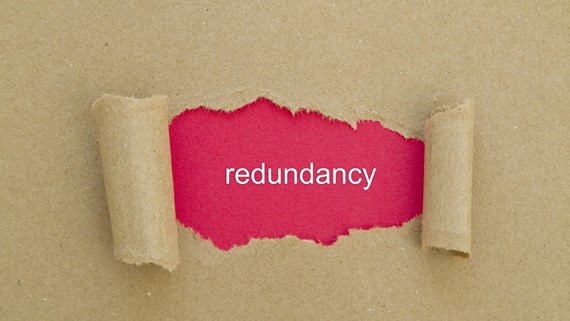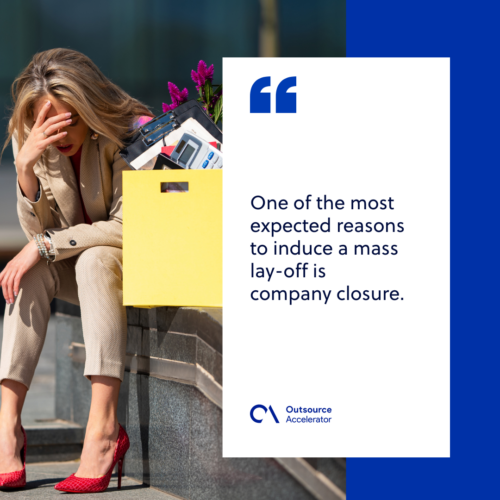Redundancy Pay If Company Goes Bust: Understanding Your Privileges in the UK
Redundancy Pay If Company Goes Bust: Understanding Your Privileges in the UK
Blog Article
Exploring the Interplay Between Company Redundancy and Organizational Flexibility for Future Development
In the dynamic landscape of today's service world, the elaborate connection between firm redundancy and organizational flexibility emerges as a vital variable for sustained development and success. Firms typically encounter the challenge of striking a fragile equilibrium in between maintaining a degree of redundancy to minimize threats and cultivating flexibility to react promptly to the ever-evolving market demands.
Significance of Business Redundancy
Firm redundancy is an essential aspect that enhances organizational durability and alleviates operational dangers. By integrating redundancy steps within the organizational framework, companies can much better endure unpredicted interruptions and fluctuations in business atmosphere. Redundancy functions as a tactical buffer, allowing business to adjust and respond successfully to unforeseen difficulties without compromising necessary operations.
One key aspect of the value of firm redundancy is its role in making certain continuity during times of crisis. When faced with unexpected modifications or emergencies, redundant systems, resources, or workers can step in to preserve critical features and protect against prevalent disruptions. This continuity not only safeguards the company's online reputation and customer count on yet likewise minimizes economic losses and operational downtime.

Approaches for Business Versatility

Producing adaptable business frameworks that enable for quick adjustments to market characteristics and consumer requirements is essential for remaining competitive in a swiftly evolving setting. By proactively recognizing prospective disruptions and chances, companies can proactively flourish and adapt in an ever-changing organization landscape.
Balancing Redundancy and Adaptability
Accomplishing an unified balance between functional redundancy and organizational flexibility is paramount in navigating the complexities of a dynamic business atmosphere. Striking the appropriate equilibrium in between redundancy and versatility is a delicate procedure that needs a deep understanding of the organization's objectives, sector dynamics, and risk resistance.
To accomplish this balance, firms need to carry out normal assessments of their procedures to determine locations where redundancy is necessary for risk reduction and where versatility can drive technology and growth. Executing adaptable frameworks, cultivating a culture of continuous knowing and improvement, and encouraging open communication throughout all levels of the company are key approaches to integrate redundancy and adaptability effectively. By straightening these two critical elements, companies can position themselves for sustainable growth and success in an ever-changing service landscape.
Study on Adjustment Success
In checking out circumstances of successful organizational adaptation, it comes to be apparent that the interaction in between functional redundancy and adaptability is a specifying aspect in shaping durable businesses. A DVD rental solution, Netflix showed exceptional flexibility by transitioning into a streaming platform when digitalization disrupted the industry. These situation research studies linked here highlight the importance of functional redundancy paired with business flexibility in cultivating long-term growth and competitiveness.
Structure Strength for Future Growth
Building you can try here strength for future growth needs a calculated positioning of operational processes with market dynamics and emerging fads. Companies have to adapt to changing atmospheres by cultivating a culture of versatility, technology, and constant renovation. Durability entails not only getting better from problems but additionally proactively planning for future difficulties. One crucial aspect of building durability is purchasing durable risk monitoring approaches to mitigate possible disruptions. This includes situation preparation, diversifying supply chains, and creating backup plans for numerous contingencies (who pays redundancy money).
Additionally, fostering solid partnerships with stakeholders, such as customers, employees, suppliers, and the community, is necessary for weathering unpredictabilities and keeping count on and support throughout turbulent times. Efficient interaction and openness play an essential role in building resilience, as they help assist in and align assumptions collaboration in browsing unpredictabilities.
In addition, organizations need to prioritize discovering and growth efforts to upskill staff members and outfit them with the necessary devices to adapt to transforming situations. By investing in their labor force, companies can boost their flexibility and dexterity, inevitably strengthening their strength for lasting future growth.
Verdict

In the dynamic landscape of today's organization globe, the elaborate connection in between business redundancy and business flexibility arises as a vital variable for continual growth and success. Firms usually deal with the difficulty of striking a delicate equilibrium between preserving a level of redundancy to alleviate risks and fostering flexibility to respond promptly to the ever-evolving market needs.To achieve this balance, firms require to carry out normal assessments of their procedures to recognize areas where redundancy is required for danger mitigation and where adaptability can drive development and growth.In final thought, the interplay in between firm redundancy and organizational adaptability is vital for future growth. Building durability through a combination of redundancy and versatility will make sure that firms are prepared for the obstacles of the future.
Report this page